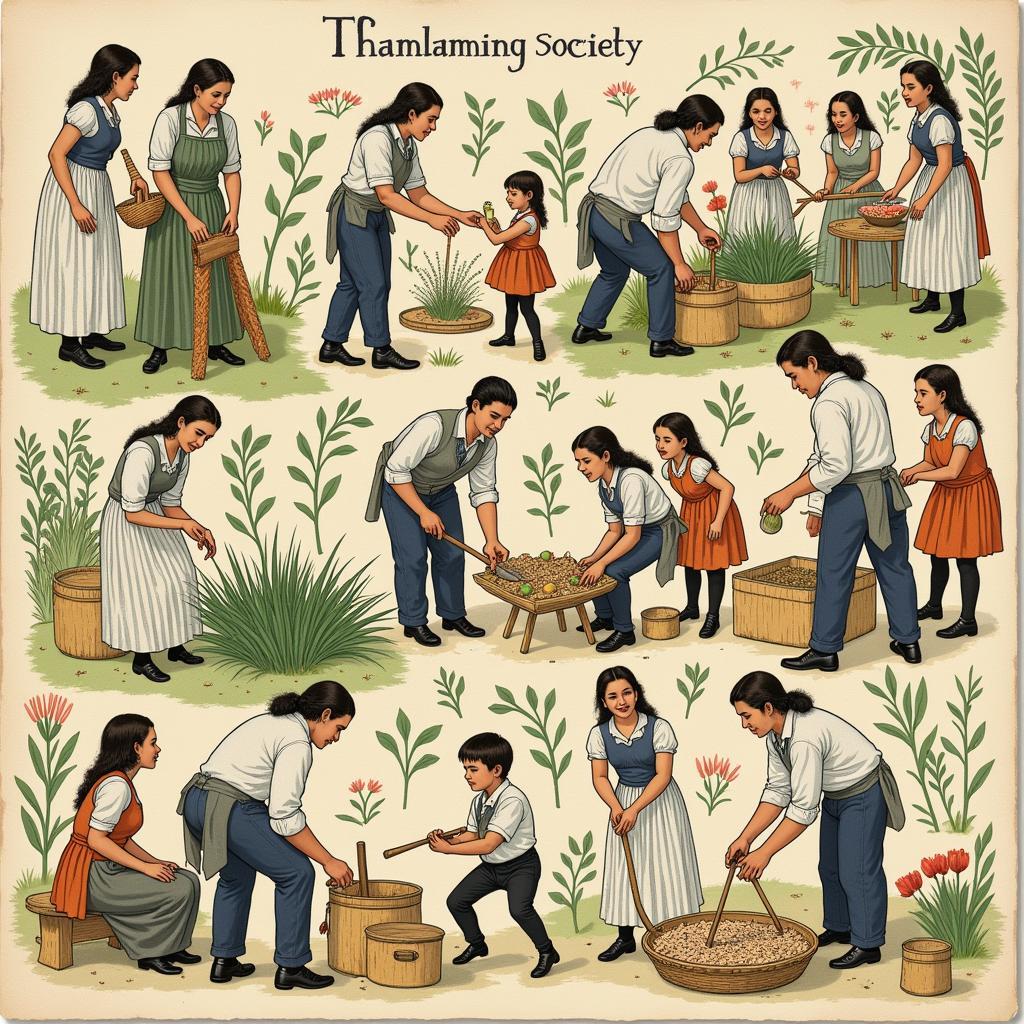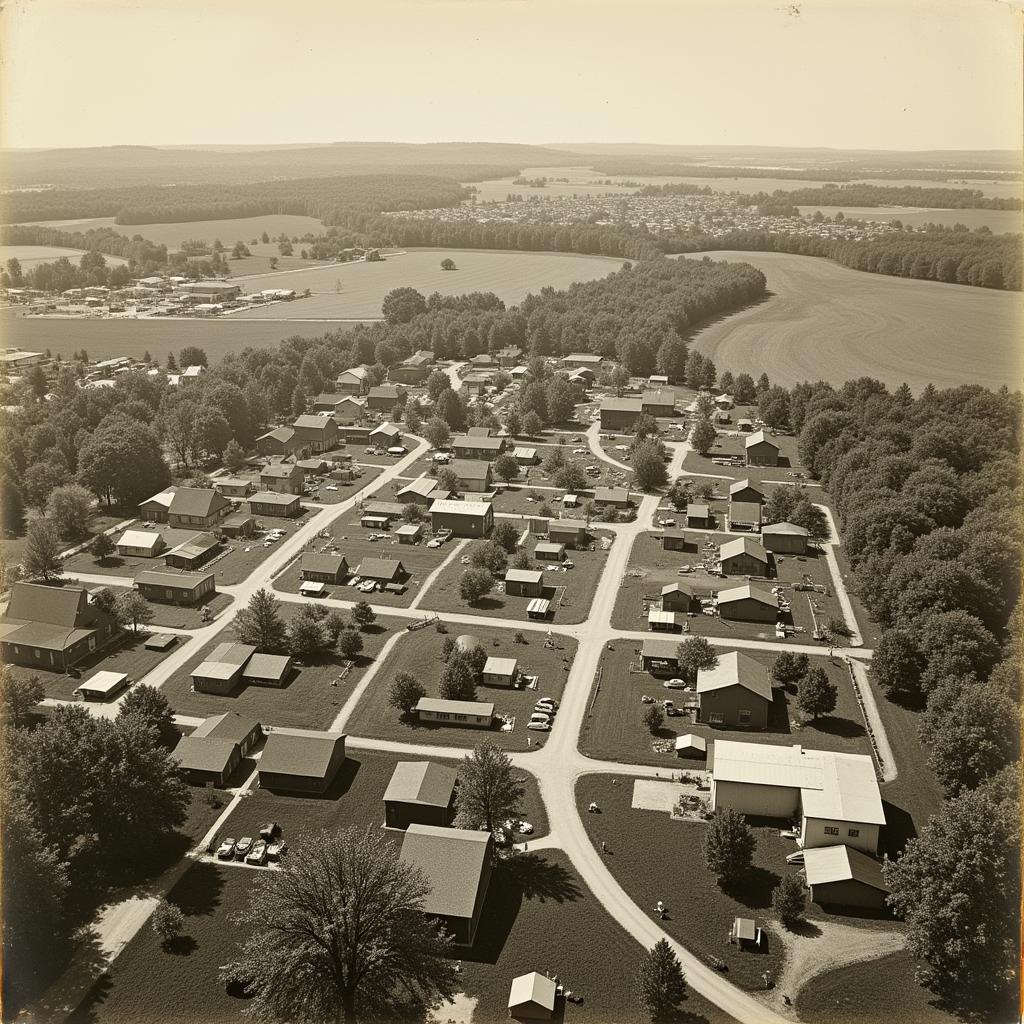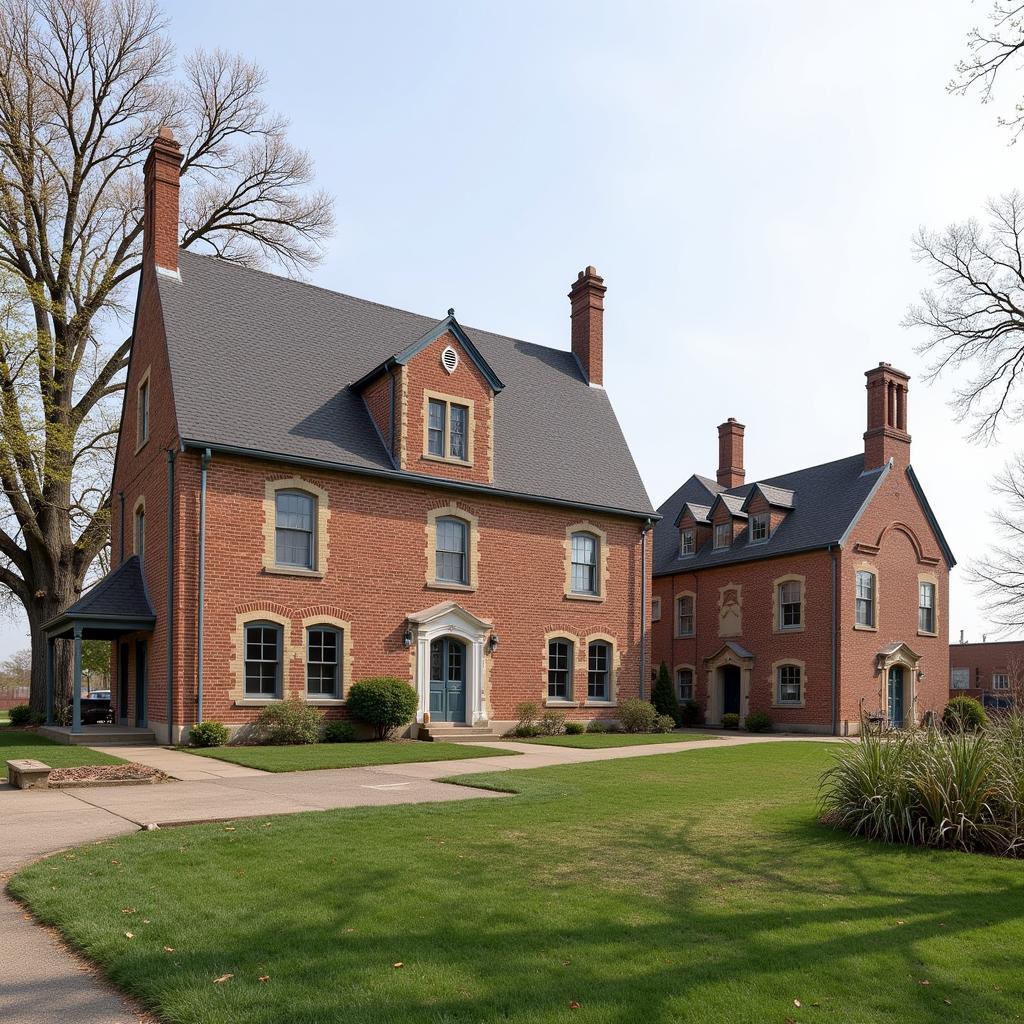The Harmony Society Vincennes, also known as the Rappites, represent a fascinating chapter in American history. This utopian religious community, founded in early 19th century Germany, sought a life of peace, equality, and spiritual devotion. Their journey, marked by communal living, industriousness, and a unique social structure, left an indelible mark on Vincennes, Indiana, and beyond.
Understanding the Harmony Society Vincennes’ Beliefs and Practices
The Harmony Society, led by George Rapp, adhered to a strict interpretation of Christianity, emphasizing piety, hard work, and communal ownership of property. They believed in celibacy and a simple life, rejecting worldly possessions and focusing on spiritual growth. This commitment to their beliefs allowed them to establish thriving communities based on agriculture, craftsmanship, and industry. The Rappites’ success was built on their collective efforts and their ability to adapt to new environments.
The community’s dedication to self-sufficiency led them to develop a diverse range of skills, from farming and weaving to furniture making and wine production. Their businesses flourished, and their settlements became models of economic prosperity. Their story is a testament to the power of collective effort and shared vision. What motivated these individuals to abandon traditional society and embrace such a radical way of life? It’s a question that continues to intrigue historians and researchers today.
 Daily Life in Harmony Society Vincennes
Daily Life in Harmony Society Vincennes
From Germany to Indiana: The Harmony Society’s Journey
The Harmony Society’s journey began in Iptingen, Germany, where they faced persecution for their religious beliefs. Seeking religious freedom, they emigrated to the United States in 1804, first settling in Harmony, Pennsylvania. Later, they moved to Indiana, establishing the town of Harmony (later New Harmony) in 1814. This move marked a significant chapter in their history, as they carved out a new life in the American wilderness. Their dedication to peace and harmony made them an intriguing example of utopian living in the early 19th century. The Harmony Society Vincennes provides valuable insights into the challenges and triumphs of building a utopian society.
Their journey was not without its challenges. They faced internal disagreements and external pressures, but their commitment to their principles held them together. The Harmony Society’s story offers a unique perspective on the complexities of communal living and the search for a better world. Their experiences in Indiana played a pivotal role in shaping their identity and legacy.
 Harmony Society Settlement in Indiana
Harmony Society Settlement in Indiana
The Legacy of the Harmony Society Vincennes
Though the Harmony Society eventually dissolved, its impact on Vincennes and American society remains. Their meticulous records and preserved architecture offer a glimpse into their unique way of life. The Harmony Society’s story continues to inspire discussions about communal living, social reform, and the pursuit of a more harmonious world. Their innovative approach to community building and economic development offers valuable lessons for contemporary society.
The Harmony Society Vincennes stands as a testament to the human desire for a better world. Their story, filled with both successes and failures, provides a compelling case study for understanding the challenges and rewards of pursuing utopian ideals. The legacy of the Harmony Society Vincennes continues to resonate, reminding us of the importance of community, cooperation, and the enduring search for harmony.
What were the key principles of the Harmony Society?
The key principles of the Harmony Society were piety, hard work, communal ownership of property, and celibacy.
 Architectural Legacy of Harmony Society Vincennes
Architectural Legacy of Harmony Society Vincennes
Conclusion: Harmony Society Vincennes – A Timeless Story of Community
The Harmony Society Vincennes provides a unique perspective on the human quest for a more perfect society. Their story, while belonging to the past, offers valuable insights for the present. Their commitment to peace, equality, and community serves as a timeless reminder of the importance of working together towards a better future. The Harmony Society’s journey, from Germany to Pennsylvania and finally to Indiana, is a testament to the human spirit’s enduring search for harmony.
FAQ
- What was the main goal of the Harmony Society? To create a community based on religious principles and communal living.
- Why did the Harmony Society leave Germany? They sought religious freedom and escape from persecution.
- What was the Harmony Society’s economic foundation? Agriculture, craftsmanship, and industry.
- Did the Harmony Society believe in marriage? No, they practiced celibacy.
- What is the lasting legacy of the Harmony Society Vincennes? Their preserved architecture and records provide valuable insights into their unique way of life.
- Where can I learn more about the Harmony Society? Visit museums and historical sites in New Harmony, Indiana, and research online archives.
- What other utopian communities existed in the 19th century? The Shakers, the Oneida Community, and the Amana Colonies.
Scenarios and Further Questions:
Imagine being a member of the Harmony Society. What would daily life be like? What challenges might you face? These questions invite us to delve deeper into the complexities of communal living and the sacrifices required to maintain such a lifestyle.
Other questions worth exploring include: How did the Harmony Society’s beliefs impact their social structure? How did they interact with the outside world? What were the long-term consequences of their practices?
Further Exploration
Explore other articles on our website about utopian communities and social reform movements in the 19th century.
Call to Action
For further support or information, please contact us:
Phone: 02043854663
Email: [email protected]
Address: Khu 34, Bac Giang, 260000, Vietnam
Our customer service team is available 24/7.